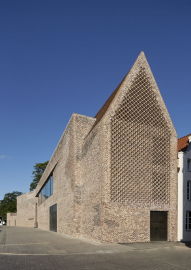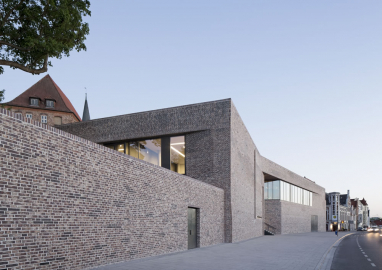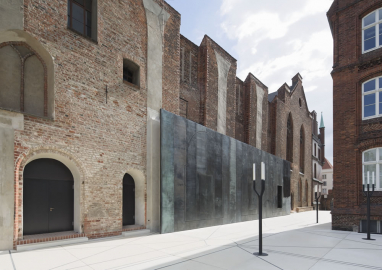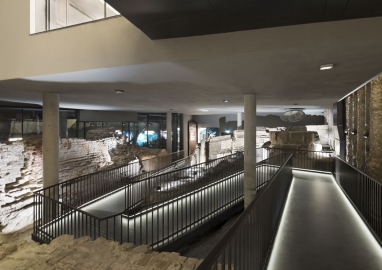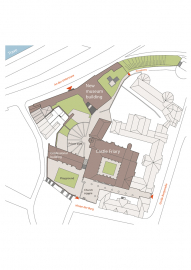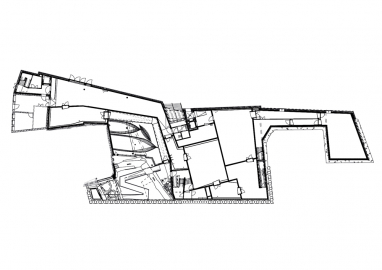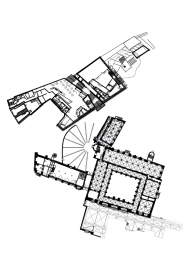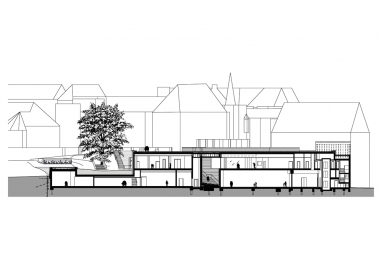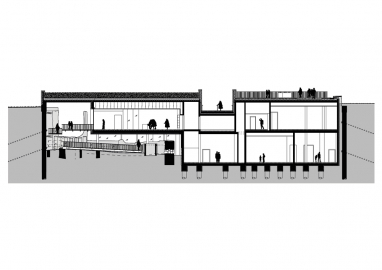European Hansemuseum
The European Hansemuseum is the largest museum in Europe dedicated to the history of the Hanse. It is situated in the north of Lübeck's old town. The museum includes a new building, the historic monument Lübeck Castle Friary and grounds open to the public.
The architecture of the new museum building blends a finely crafted brick texture with elegant modernist lines to form a link between the past and the present. In its monolithic character the new building evokes the medieval city wall that once ran along the foot of the Castle Hill. The texture of the façade emphasises this association by means of jagged, variegated and irregularly laid masonry.
The interactions between the main building materials – bricks, bronze and exposed concrete – create an architectural narrative. In the side street leading up the Castle Hill the museum building references a typical front-gabled Lübeck townhouse. The façade features an extensive ornamental design based on the quatrefoil, one of the most striking motifs of brick Gothic architecture.
The museum complex extends from the top of the former Castle Hill on which the Castle Friary stands down to the street An der Untertrave and covers 7,405 square metres. The new building sits snugly against the Castle Hill. An open staircase in the centre links the historic docks with the old town in a sweeping gesture. It forms the entrance point for the new museum building and also leads up to the Castle Friary and the grounds above the new building. Alternating open and enclosed areas on various levels create an intriguing sequence of external spaces for people to explore, to sit and to enjoy. Public terraces offer a panoramic view of the former port and extensive texts are provided to explain the history of the various courtyards.
Characteristic materials are bricks, exposed concrete and architectural bronze. The new building is a reinforced concrete construction.
The European Hansemuseum is also a “green museum”. Environment considerations played an important role in the construction of the new museum building. The design of the new museum building has been optimised for its intended use. Windows and doors have only been planned where they are sensible and necessary to reduce energy loss to a minimum. Glass façades and glazed elements make use of triple-glazing for thermal insulation. The façade of the new building is clad with a facing of hard-fired bricks made of loam – a sustainable building material from the region. The roof areas of the European Hansemuseum are mostly green roofs. Furthermore, geothermal, or ground source energy, is used for the building's air conditioning and heating system.


